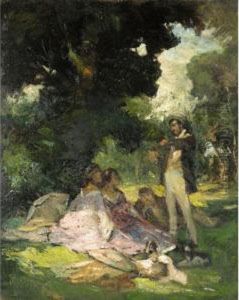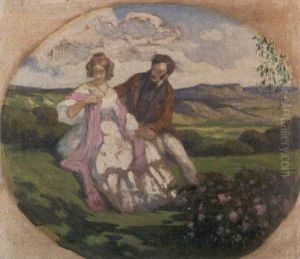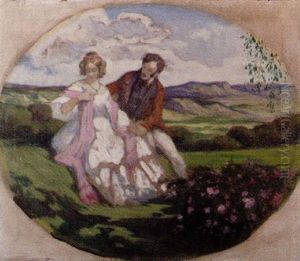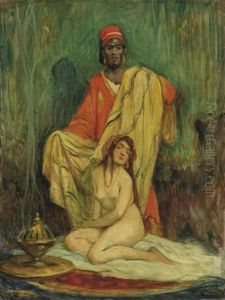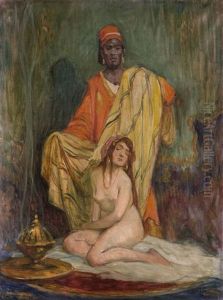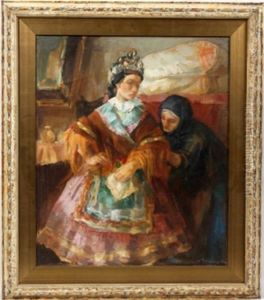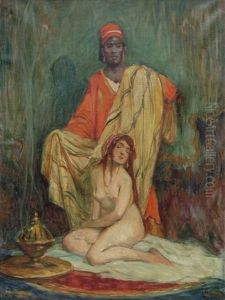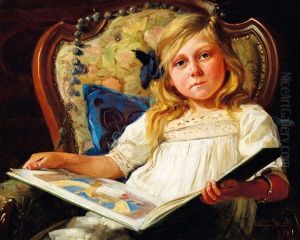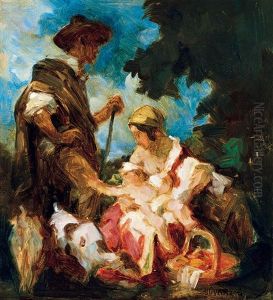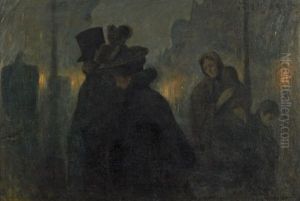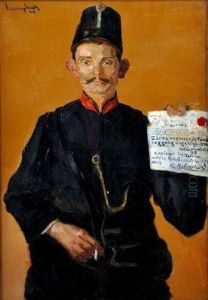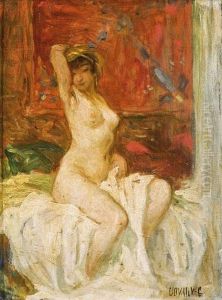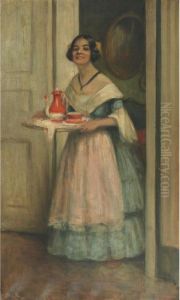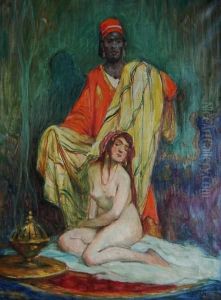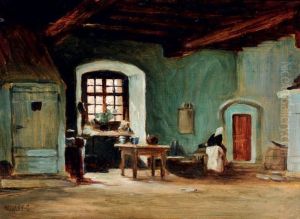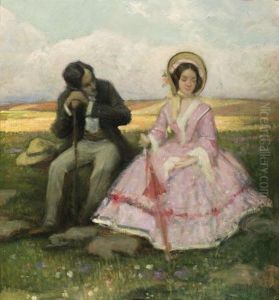Geza Udvary Paintings
Géza Udvary was a notable Hungarian painter, born in 1861 in Budapest, Hungary, then part of the Austro-Hungarian Empire. His artistic journey is a reflection of the vibrant cultural milieu of late 19th and early 20th century Hungary, a period marked by significant political, social, and artistic transformations.
Udvary's education in art began at the Hungarian University of Fine Arts, where he was influenced by the academic styles prevalent at the time. However, his style evolved significantly over the years, incorporating elements of realism, impressionism, and eventually, the Art Nouveau movement that swept through Europe at the turn of the century. This evolution reflects Udvary's constant search for new means of expression and his responsiveness to the changing artistic landscapes of his time.
Throughout his career, Udvary painted a wide range of subjects, from genre scenes and landscapes to portraits and historical themes. His works are characterized by a meticulous attention to detail, a vibrant palette, and a dynamic interplay of light and shadow, qualities that earned him considerable acclaim during his lifetime.
In addition to his painting, Udvary contributed to the artistic life of Hungary in various capacities. He was a respected teacher at the Hungarian University of Fine Arts, where he influenced a new generation of Hungarian artists. His commitment to the arts extended beyond teaching, as he was actively involved in various artistic societies and exhibitions, helping to promote Hungarian art both nationally and internationally.
Géza Udvary's legacy is preserved in Hungary's national galleries and museums, as well as in private collections around the world. His work not only offers insight into the aesthetic developments of his time but also serves as a testament to the rich cultural heritage of Hungary. Udvary passed away in 1934 in Budapest, leaving behind a body of work that continues to be celebrated for its artistic merit and historical significance.
